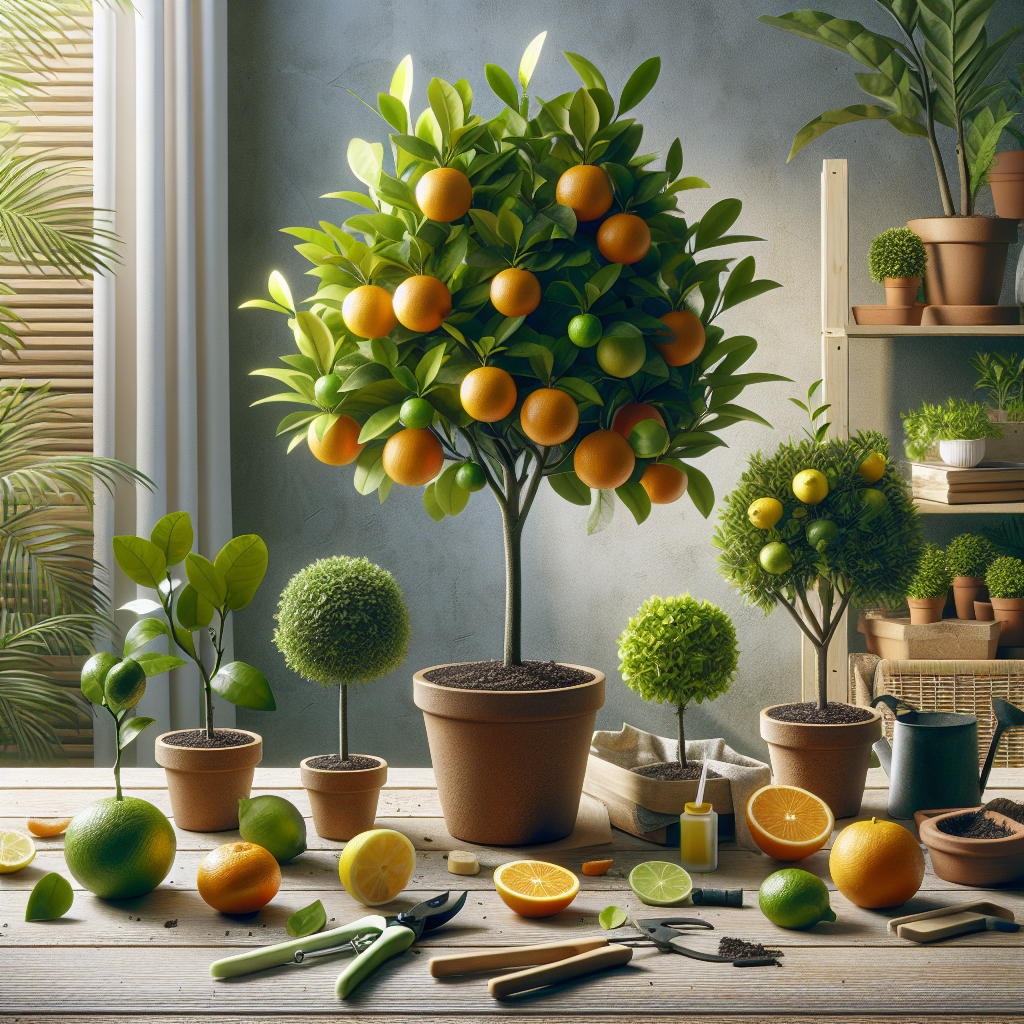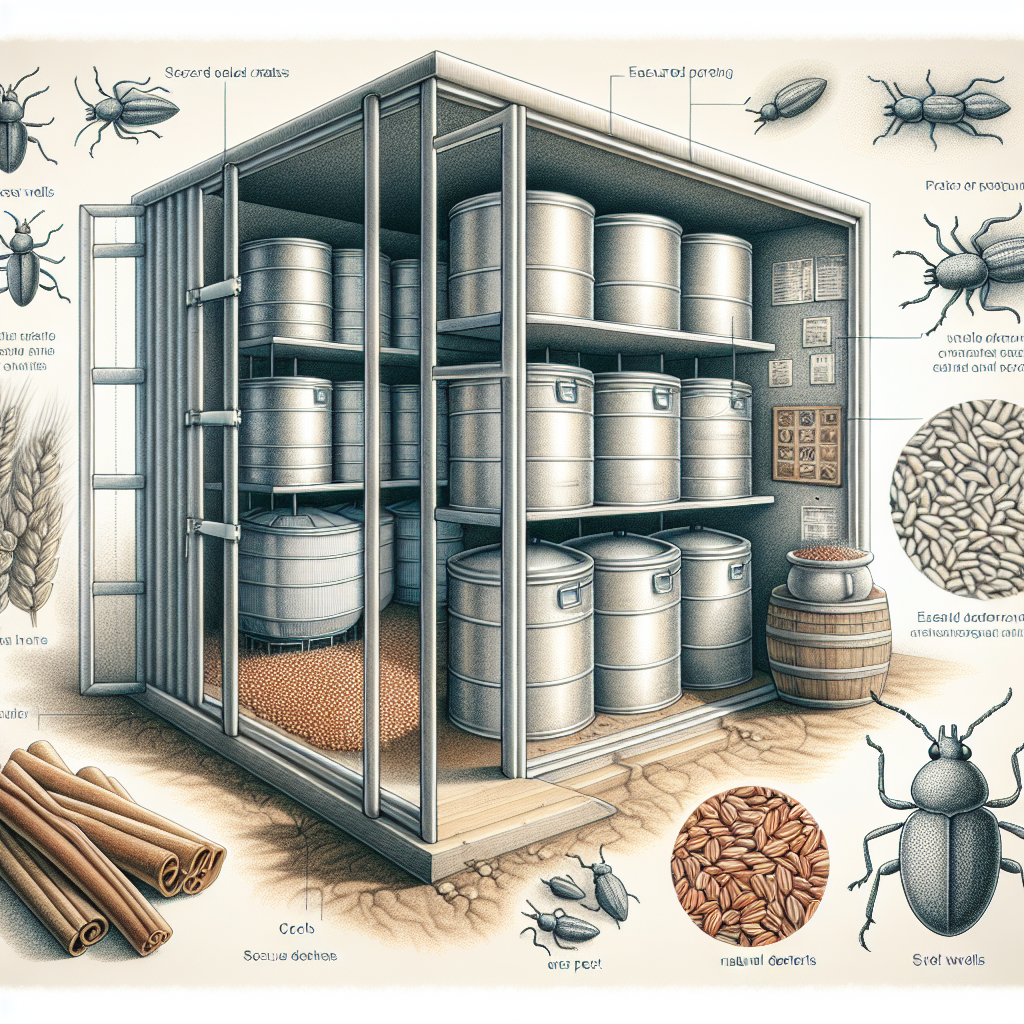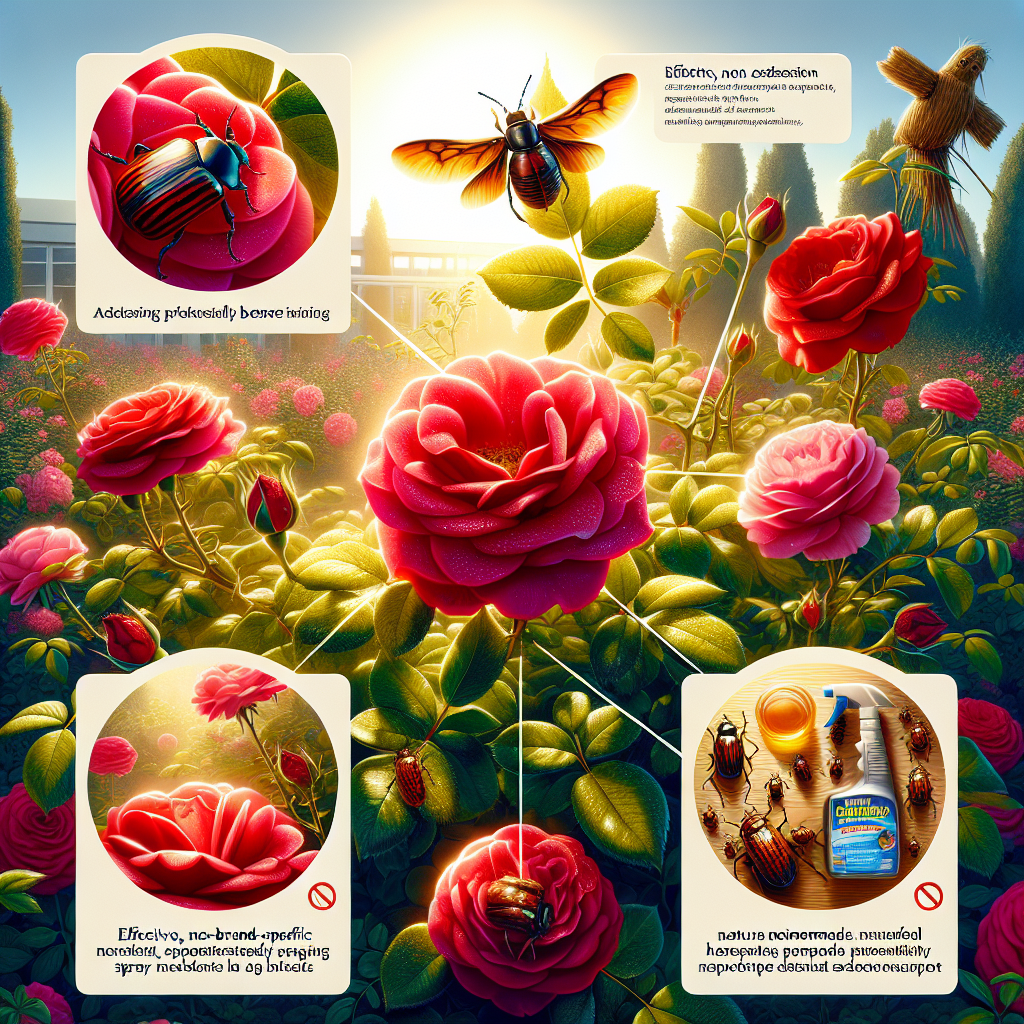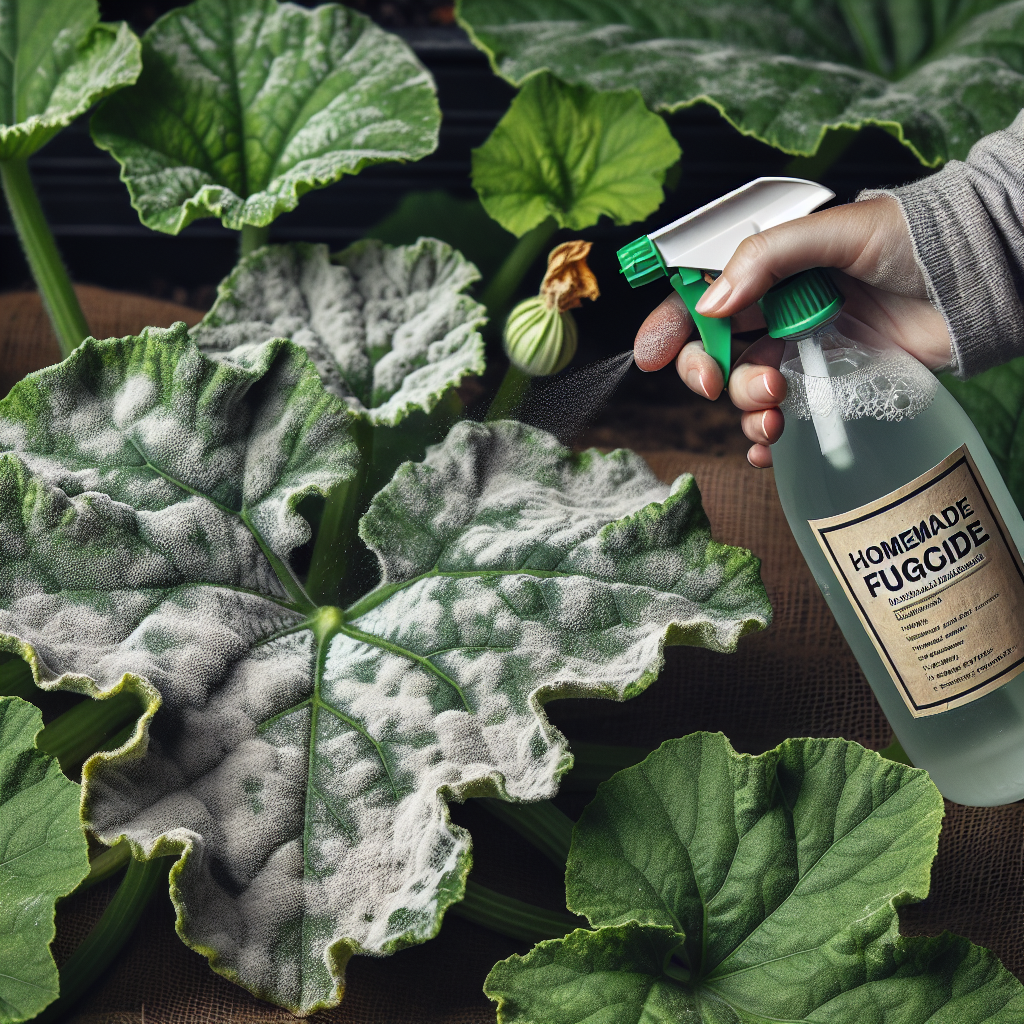The Beginner’s Guide to Indoor Dwarf Citrus Trees
Updated April 20, 2024 at 5:58 pm

Overview of Indoor Dwarf Citrus Trees
- Pet Friendly: Dwarf citrus trees are generally safe for pets, but it’s always best to discourage chewing on leaves or stems, as they can cause mild digestive issues.
- Light Requirements: These trees crave sunlight and thrive with at least 6-8 hours of direct light daily. A south-facing window is ideal.
- Watering: Regular watering is key, but allow the soil to dry out slightly between waterings to prevent root rot.
- Humidity: Dwarf citrus trees enjoy moderate humidity. A regular misting or a pebble tray with water can help in drier environments.
- Temperature: They prefer warmer temperatures, ideally between 65°F and 85°F, and should be protected from drafts and extreme temperature changes.
- Difficulty: With proper care, they are moderately easy to maintain, making them suitable for beginners passionate about indoor gardening.
Choosing the Right Dwarf Citrus Tree for Your Home
If you’re considering adding a touch of the tropics to your home, dwarf citrus trees are a delightful option. These miniature trees can flourish indoors and produce real, edible fruit. Popular varieties include the Meyer lemon, Key lime, and Calamondin orange, each with its own unique care requirements and fruiting schedule.
Planting and Potting Dwarf Citrus Trees
Starting off on the right root, so to speak, is essential. Selecting a well-draining, slightly acidic potting mix specifically designed for citrus plants is crucial. A pot with ample drainage holes and a saucer to catch excess water will keep your plant healthy. Many gardeners recommend using a terra cotta pot, as it allows soil to breathe and helps prevent overwatering.
Proper Sunlight and Positioning
Positioning your dwarf citrus tree in a sun-drenched spot is a sure-fire way to keep it happy. If you lack natural light, especially in the winter months, grow lights are an excellent investment to ensure your tree gets sufficient light. The VIVOSUN LED Grow Light is a popular choice, boasting full-spectrum LEDs that mimic natural sunlight. Its adjustable gooseneck arms and timed settings allow for a customizable setup. Users often comment on its ease of use and the robust health of the plants under its care.
Find This and More on Amazon
Watering and Feeding Your Indoor Citrus
Watering your dwarf citrus tree correctly is a balancing act. The goal is to keep the soil moist but not soggy. When it comes to feeding, a balanced, slow-release fertilizer made for citrus is your best bet. Espoma Citrus-tone is well-regarded in the community for promoting lush foliage and vibrant fruit, without being too harsh on the roots.
Pruning and Maintenance
Keeping your tree compact and healthy involves regular pruning. Snip away any dead or crossing branches and shape the canopy to allow light to penetrate. This encourages better air circulation and fruit production. Clean, sharp pruning shears are a must-have to ensure clean cuts that heal quickly, reducing the risk of disease.
Dealing with Pests and Diseases
No plant is immune to pests or diseases, and dwarf citrus trees are no exception. Keep an eye out for common culprits such as spider mites, scale, and aphids. Neem oil spray, like the one from Safer Brand, is a safe and natural way to combat these pests. According to many green-thumbed users, it helps keep infestations at bay without harming the plant or the fruit it bears.
Find This and More on Amazon
Harvesting Your Fruit
One of the joys of growing dwarf citrus trees is the harvest. Though patience is key – it may take a year or more before your tree bears fruit – the payout is sweet. When the fruit is vibrant in color and gives slightly to a gentle squeeze, it’s ready to be picked. Tools like the Ohuhu Fruit Picker with an extendable pole can make harvesting easier, especially if the fruit is just out of reach. Reviewers say it’s a game-changer for collecting fruit without damaging branches or the fruit itself.
Find This and More on Amazon
Repotting for Continued Growth
As your tree grows, it may become necessary to repot it to give the roots more room. The best time to repot is in the spring, before the growth season begins. Choosing a pot that’s only slightly larger than the current one will prevent overwatering and ensures the plant won’t get lost in a too-big pot. Remember to use a fresh potting mix to give your tree a boost of nutrients.
Winter Care Tips
During the winter, dwarf citrus trees can struggle with less light and dry indoor heat. Consider moving your tree to a cool, bright room, and maintain humidity with a humidifier or pebble tray. This helps prevent leaf drop and ensures your tree will make it through to the next growing season.
Common Issues and Solutions
If your trees’ leaves are yellowing, this might be a sign of overwatering or nutrient deficiency. A good way to monitor watering is with a moisture meter, like the XLUX Soil Moisture Meter. Users rave about its accuracy in ensuring their plants receive just the right amount of water. If nutrient deficiency is suspected, re-evaluating your fertilizing regime may be necessary.
Find This and More on Amazon
Enjoying Your Indoor Citrus Tree
Imagine sipping on a homemade lemonade or garnishing your meal with a slice of lime from your own tree. Growing dwarf citrus indoors not only brings beauty and a fresh aroma into your home but also a sense of accomplishment. With patience and care, your green endeavor will provide zesty rewards for years to come.
Understanding Dwarf Citrus Tree Varieties
Before you invite one of these charming trees into your home, it’s important to understand the differences between the varieties. Meyer lemons are known for their sweet, less acidic flavor and are often a top choice for indoor gardening due to their compact size. The Key lime, with its aromatic leaves and smaller, tart fruits, can bring a lively zest to your dishes. Calamondin oranges, on the other hand, are valued for their ornamental appeal and their small, sour oranges which are perfect for marmalades.
Soil and Nutrient Essentials
The foundation of a healthy dwarf citrus tree lies in its soil. A well-draining, citrus-specific potting mix is essential; these typically include ingredients like perlite, peat, and pine bark, which together create an environment that mimics their native one. In addition to proper soil, regular feeding with a high-quality citrus fertilizer will ensure your tree has all the nutrients it needs. Jobe’s Organics Fruit & Citrus Fertilizer with Biozome is often recommended as it’s organic and not harmful to pets. It’s praised for improving soil conditions and providing a slow-release feed that supports vibrant growth and fruiting.
Find This and More on Amazon
Benefits of Growing Dwarf Citrus Trees Indoors
Growing dwarf citrus trees indoors isn’t just about harvesting fresh fruit; it’s also about enhancing your living space. These trees act as a natural air freshener, emitting a delightful citrus fragrance that can elevate your mood and improve air quality. Additionally, the lush foliage and vibrant fruits provide an aesthetic boost that can brighten any room.
Flowering and Pollination
Before you can enjoy the fruits of your labor, your indoor dwarf citrus tree will put on a delightful show of fragrant blossoms. Indoor conditions can limit pollination since there are no natural pollinators like bees. Hand pollination with a small brush can simulate the work these insects would do outdoors, ensuring that your tree sets fruit properly. The blossoms themselves are a treat to the senses and can add a delightful hint of spring to your home any time of the year.
Navigating Seasonal Changes
Dwarf citrus trees are sensitive to changes in their environment. As the seasons change outside, they respond inside. It’s important to adjust care routines as light levels and temperatures shift with the seasons. In fall, you might need to increase light exposure with grow lights, and in summer, ensuring your tree isn’t exposed to overly hot temperatures is key for its health and productivity.
Getting Creative with Citrus
There’s joy in nurturing a tree from blossom to fruit, but the excitement doesn’t end there. Fresh citrus from your own tree can transform your cooking and cocktails, offering a truly farm-to-table experience. Whether it’s fresh-squeezed juice for breakfast, a lemony dessert, or a lime twist in your evening drink, having these trees indoors puts these fresh ingredients at your fingertips.
Connecting with a Community of Growers
You’re not alone in your indoor gardening journey. Online communities and forums are filled with fellow citrus tree enthusiasts where you can share tips, troubleshoot issues, and celebrate successes. Local gardening clubs can also provide a space to connect with like-minded individuals, exchange cuttings, and deepen your knowledge of horticulture.
Environmental Impacts and Considerations
Being eco-friendly is more important than ever, and growing a dwarf citrus tree indoors aligns with sustainable living practices. It reduces the carbon footprint associated with transporting fruits over long distances, and when grown organically, it cuts back on the use of harmful pesticides that can affect the local environment.
Creating a Home Orchard
Why stop at one tree? With sufficient space, you can create a diverse home orchard. Combining different types of dwarf citrus trees can extend the period over which you can harvest fresh fruit and create a striking indoor landscape.
Caring for Dwarf Citrus Trees in Varying Climates
Regardless of where you live, your indoor dwarf citrus trees can be successful with the right adjustments. For those in colder climates, supplemental heat may be necessary during the winter months to maintain an optimal growing temperature. Conversely, for gardeners in hotter regions, ensuring your tree isn’t scorched by intense sun will involve strategic placement away from overly bright windows or providing shade during peak heat hours.
Embracing Organic Growing Practices
Opting for organic cultivation methods benefits not only the environment but also ensures that the fruit you consume is free from synthetic pesticides and fertilizers. Organic compost and soil, natural pest control solutions like ladybugs or lacewings, and organic fertilizers such as the previously mentioned Jobe’s Organics are great ways to keep your tree healthy the natural way.
Troubleshooting Leaf Drop and Other Common Concerns
Leaf drop can be alarming, but it’s often a sign of a solvable problem such as overwatering, underfeeding, or a sudden change in temperature. By carefully examining your tree’s conditions, you can usually pinpoint the issue. Consulting with other citrus growers online or reaching out to your local nursery can also provide helpful insights into these common issues.
Incorporating Citrus into Your Decor
Dwarf citrus trees are not only producers of tangy fruits but also beautiful living decor. Play with pot colors and styles to match your decor, or arrange your tree with other plants to create a lush indoor oasis. The tree’s vibrant green leaves, colorful fruit, and fragrant flowers offer a multi-sensory experience that complements any interior design scheme.
The Joy of Sharing Your Harvest
Part of the excitement of growing your own dwarf citrus is the ability to share. Gifting friends and family with fresh-picked citrus or homemade preserves can be highly rewarding. It’s a way to spread the love and possibly inspire others to start their own indoor gardening adventure.
A Lifetime of Learning and Growing
Caring for dwarf citrus trees is a continual learning experience. Every plant is unique, and adapting to its needs over the years will sharpen your horticultural skills. These trees can live for decades, providing not just fruit but also joy, knowledge, and greenery to your home. Embrace the journey and relish the rewards of your dedication.
Finding Further Resources and Expertise
As you dive into the world of indoor dwarf citrus trees, take advantage of the wealth of resources available. From detailed gardening books and blogs dedicated to citrus care to video tutorials and workshops, there’s a vast pool of knowledge to help you along the way. Don’t hesitate to seek out expert advice from botanists or agricultural extension services if needed.
Summary: The Sweet Simplicity of Indoor Dwarf Citrus Trees
Growing dwarf citrus trees indoors is a fulfilling hobby that can brighten your home and your palate. From the Meyer lemon’s sweet fruit to the Calamondin orange’s ornamental appeal, there’s a variety for every preference and space. With attention to their basic care needs like sunlight, watering, and fertilizing, these trees can be a simple, joyful addition to your home. By embracing the community of growers, utilizing helpful resources, and staying attuned to your plant’s needs, your indoor citrus adventure will be fruitful for years to come.
Shop more on Amazon

